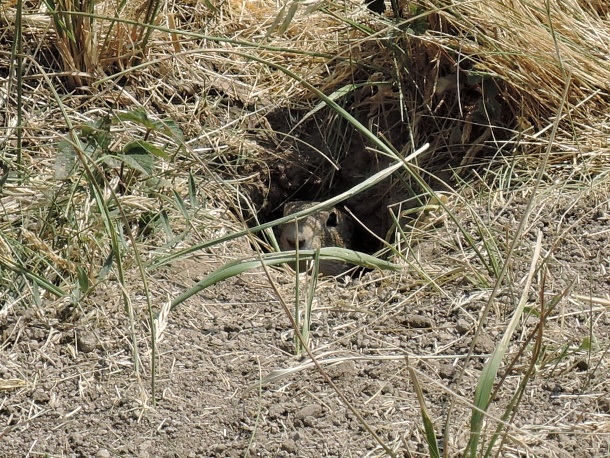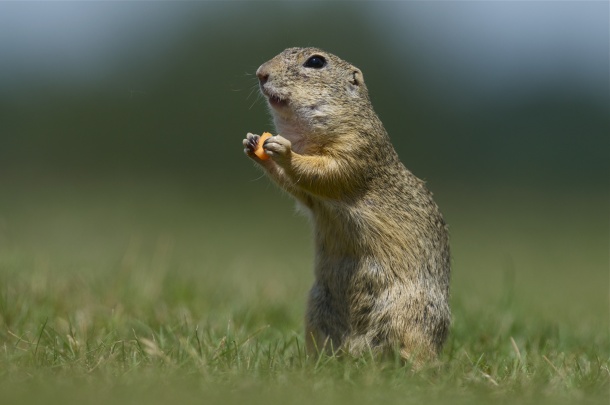How do I recognise a souslik?

Sousliks are ground dwelling rodents, from the same family as squirrels. They are small, around 20cm, and weigh from 200-300g. Males are generally larger than females but otherwise they look alike. Their bodies are generally slender yet they try and put on as much weight before they hibernate in the autumn. They have short, dense fur ranging from orange to brown/grey. The underside can be lighter. They have large eyes, small ears and a short, brush-like tail.
They are diurnal, meaning active during the day, so can be directly observed. Living socially, they create large colonies so many individuals can be observed at one time. They spend their time foraging, running, defending their territory, grooming, digging new burrows and standing guard. Their large eyes are placed high on their heads and combined with standing high on their back legs, the sousliks are well adapted to stand and look over grass for potential predators. When threatened, they alarm to notify others in the colony of the danger. This can lead to many individuals standing up and checking out what‘s happening the colony - quite a sight!

Sousliks dig extensive burrow systems to sleep and hibernate in. They have powerful legs and sharp claws which make them perfect diggers. They create two types of entrances to their holes, oblique and perpendicular to the ground, both around 5-6cm wide. They can be found in open spaces as well as at the base of trees or buildings.
They normally dig one main burrow, the oblique one (pictured above), with multiple ‚escape‘ borrows coming off it. These can be used to hide in if it‘s disturbed. The perpendicular hole (pictured below), is a straight, deep hole into the ground dug when the sousliks emerge from hibernation. They look as if someone had previously had some sort of pole in the ground!
Souslik faeces are small and elongated, measuring up to 1 cm long. They are black, with one blunt end and the other long and pointed. It has a characteristic musky odor and can be found at the entrances to their burrows.
Do you have sousliks in your vineyard?
Did your neighbour mention they think they saw one? Please get in contact with us and help us protect this critically endangered animal. Your sighting may be one we do not yet know about yet!









